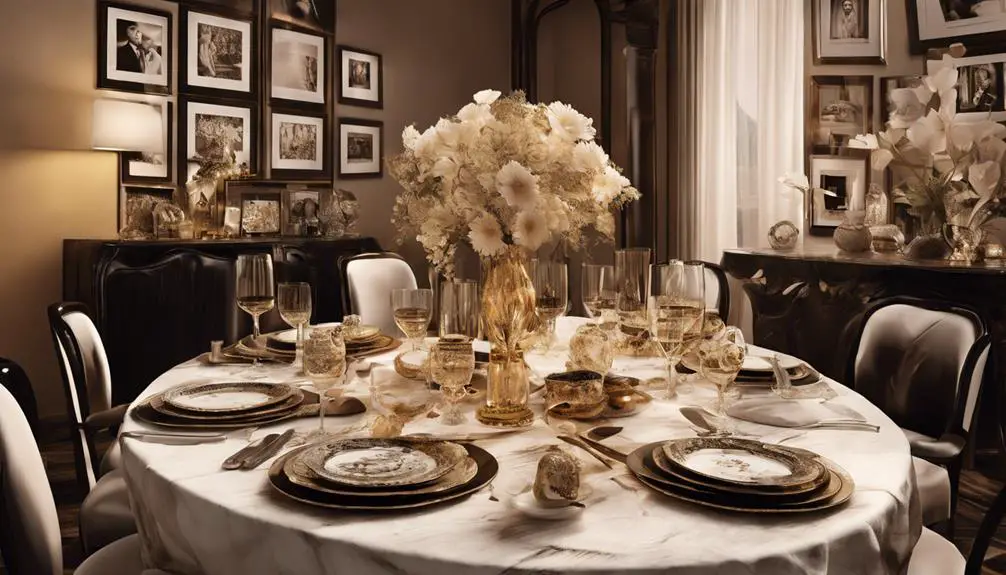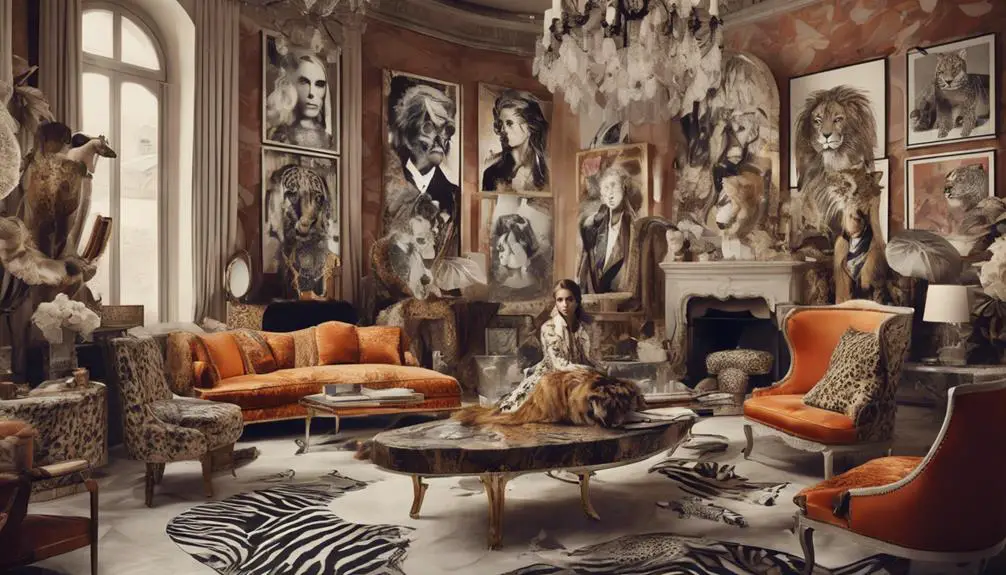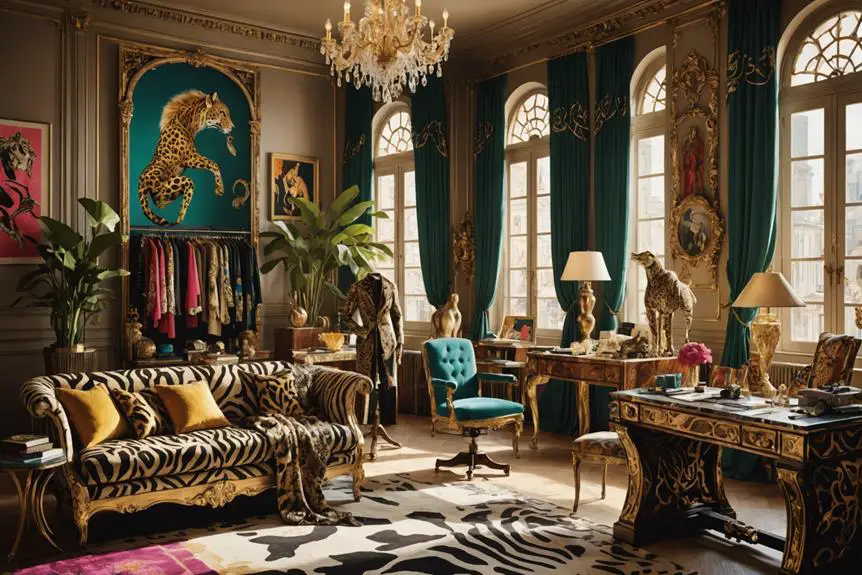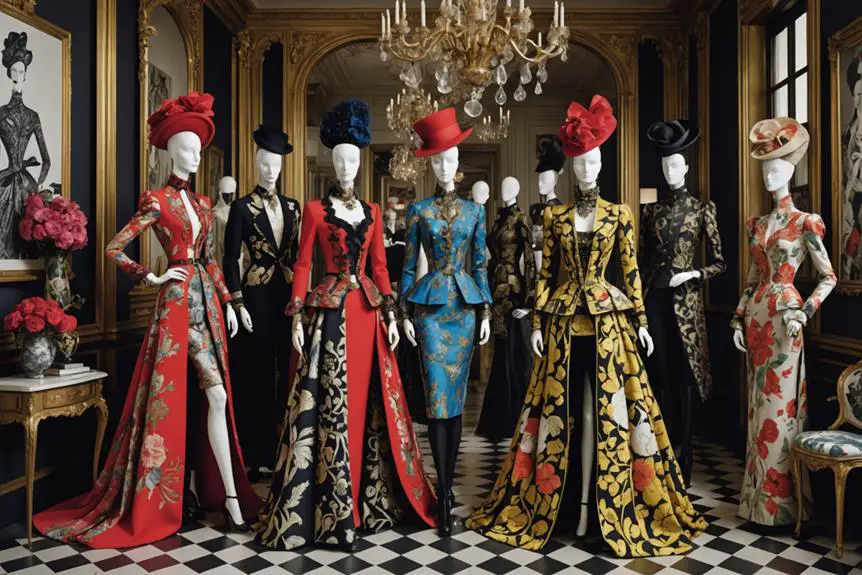Like a phoenix rising from the ashes of personal struggle, Roberto Cavalli carved his niche in the fashion world during the early 1970s. You might wonder how a young designer from Florence transformed his artistic vision into a brand synonymous with bold prints and luxurious fabrics. It all began with a groundbreaking collection that turned heads and opened doors, but what happened next in his journey? The path from a single boutique in Saint-Tropez to global recognition holds intriguing lessons about creativity and resilience.
Early Life and Influences

Roberto Cavalli's journey into the world of fashion began in the vibrant city of Florence, Italy, where he was born into a family steeped in artistic heritage. His grandfather was a celebrated Impressionist painter, which certainly influenced his early life.
After the tragic loss of his father during the Cavriglia massacre in 1944, Cavalli found solace and inspiration in art, leading him to pursue his creative passions. In 1957, he enrolled at the Academy of Art in Florence, where he honed his skills and developed a keen interest in textile prints.
Cavalli's innovative spirit shone through as he experimented with painterly techniques and textile dyeing, pushing the boundaries of traditional fashion design. His work wasn't just about aesthetics; it was about creating a connection between art and fashion.
By the early 1970s, he'd developed a patented leather printing process, a groundbreaking achievement that would define his career. This process allowed him to create stunning printed leather gowns, which debuted in his first collection in 1970.
These early experiences in Florence, combined with his artistic lineage and education, laid the foundation for Cavalli's unique style and creative vision. As he navigated the world of fashion, his roots in this enchanting city and his family's artistic background remained integral to his identity as a fashion designer, setting the stage for his future innovations and successes.
Innovative Career Launch
Cavalli's innovative career took off with the debut of his groundbreaking collection of printed leather gowns in 1970, which quickly showcased his distinctive approach to fashion. This collection not only captivated the fashion world but also introduced a unique leather printing technique that he patented in the early 1970s. Major fashion houses like Hermès and Pierre Cardin soon took notice, commissioning him for collaborations that elevated his status as a designer.
In 1972, Cavalli opened his first boutique in glamorous Saint-Tropez, strategically positioning himself to attract the fashion elite and international clientele. This bold move allowed him to display his innovative creations, which included not just leather gowns but also a variety of unique pieces that set him apart from his contemporaries.
The denim industry saw a significant revolution in 1988 when Cavalli introduced printed jeans, a game-changer that resonated with fashion enthusiasts everywhere. This trend continued in 1994 with the launch of sand-blasted jeans, further solidifying his reputation as a trailblazer in the fashion world.
In 2000, Cavalli expanded his brand with the launch of his diffusion line, Just Cavalli, targeting a younger demographic keen for diverse fashion items.
With each innovative step, Cavalli cemented his legacy, transforming the fashion landscape and inspiring future generations of designers. His journey is a reflection of creativity, ambition, and the power of distinctive design.
Personal Life and Relationships

Throughout his life, relationships have greatly shaped Cavalli's identity and creative vision. Roberto's personal life, marked by both joy and challenges, reveals a man deeply connected to his family. He married Silvanella Giannoni in 1964, and together they welcomed two children before their divorce in 1974. This early experience of family life and subsequent separation certainly influenced his outlook and work.
In 1977, Roberto met the stunning beauty queen Eva Düringer at the Miss Universe pageant. Their marriage in 1980 brought three more children into his life, creating a vibrant family dynamic that lasted until their divorce in 2010. Cavalli's relationships with his partners and children have always been pivotal, as he's often drawn inspiration from his personal life for his creative work. He embraces family values, which resonate through his designs and brand ethos.
In 2023, Roberto announced the arrival of a sixth child with his partner, Sandra Nilsson, further showcasing his unwavering commitment to family. His lavish lifestyle, complete with a Tuscan estate and a love for horse racing, reflects his passion for living life fully while cherishing those close to him.
Ultimately, Roberto Cavalli's identity is intricately woven with his relationships, which have continually fueled his creative endeavors. Each connection has contributed to his evolution as a designer, making his personal life a cornerstone of his extraordinary journey in the fashion world.
Brand Expansion and Impact
In the world of high fashion, few stories exemplify bold expansion and lasting impact like that of the Roberto Cavalli brand. It all began in 1972 when Roberto opened his first boutique in Saint-Tropez, setting the stage for a remarkable journey into the luxury fashion arena.
His innovative designs, like the iconic sand-blasted jeans introduced in 1988, revolutionized denim and captured the attention of fashion enthusiasts worldwide. By 1994, Roberto had expanded his boutique presence to multiple locations, solidifying his status as a key player in the luxury fashion market.
The launch of the Just Cavalli diffusion line in 2000 was a significant milestone, as it broadened the brand's appeal to a younger audience seeking trendy and accessible fashion items. This strategic move not only diversified the collection but also positioned Roberto Cavalli as a household name among the fashion-savvy youth.
His ability to adapt and innovate played a vital role in the brand's expansion, ensuring its relevance in an ever-evolving industry.
Fast forward to 2019, when DAMAC Properties acquired the brand, highlighting the enduring impact and value of Roberto Cavalli in the global fashion industry. This acquisition reflects the brand's ability to transcend trends, offering timeless elegance wrapped in luxurious designs.
With boutiques across the globe, the Roberto Cavalli label continues to inspire and captivate, proving that exceptional creativity and vision can lead to remarkable success.
Legacy and Cultural Significance

The legacy of the House of Roberto Cavalli stands out for its vibrant prints and innovative designs that have reshaped the fashion landscape since the 1970s. Known for its daring animal prints and creative use of leather, the brand has become a staple in luxury fashion.
Additionally, Cavalli's bold design choices have mirrored trends seen in vintage Nike apparel, showcasing how fashion evolves through daring creativity. You can see its cultural significance in several key areas:
- Denim Fashion Evolution: Cavalli revolutionized denim with his introduction of sand-blasted jeans in 1988, capturing the youthful spirit and setting new trends that continue to influence casual wear today.
- Art and Fashion Fusion: The brand's sponsorship of the "Wild: Fashion Untamed" exhibition at the Metropolitan Museum of Art in 2004 showcased its ability to blend fashion with art, demonstrating the deep connection between creativity and nature.
- Celebrity Influence: With numerous celebrity endorsements, Cavalli's vibrant colors and exotic designs have become synonymous with pop culture, solidifying the brand's status in the luxury fashion sector.
Despite facing controversies, including discussions around cultural appropriation, Roberto Cavalli's legacy inspires new generations of designers to explore creativity and ethical implications in their work.
From Roberto Cavalli Vodka to collections that embody the essence of fashion with art, the brand continues to resonate. Its innovative spirit not only reshapes what we wear but also challenges how we perceive fashion, leaving an indelible mark on the industry and culture alike.




